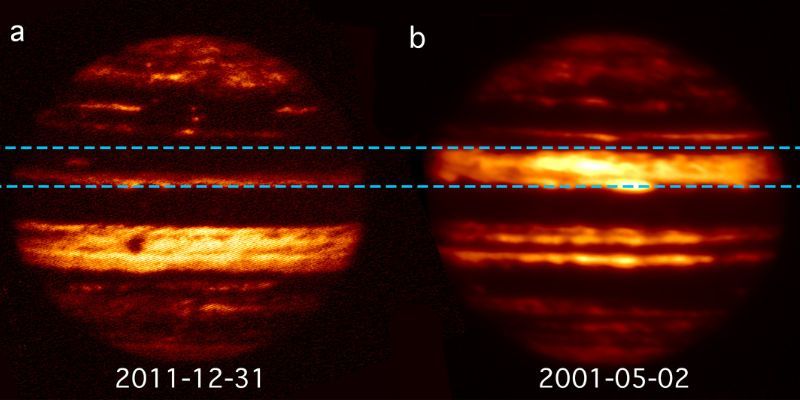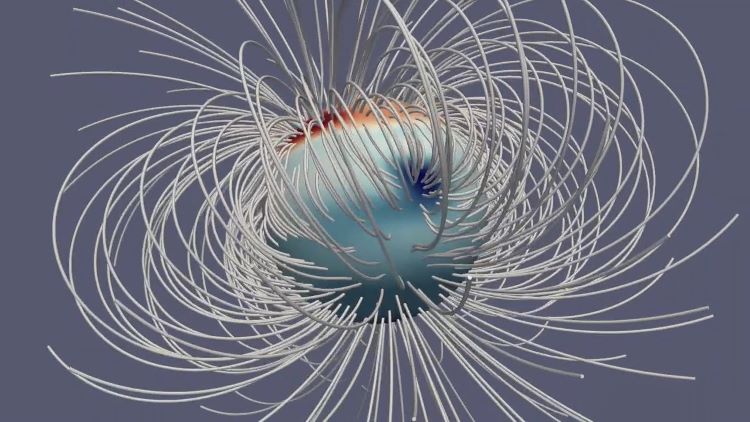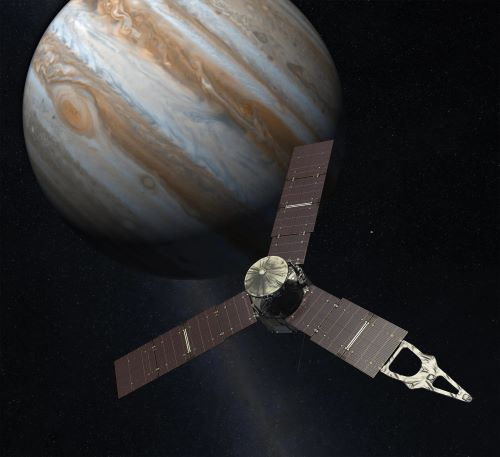While Jupiter’s Great Red Spot is one of the most well-known spectacles in the solar system, Jupiter’s clouds and ᵴtriƥes that are responsible for the planet’s weather patterns are highly regarded, as well. Though not nearly as visible in an amateur astronomy telescope, Jupiter’s multicolored, rotating, and swirling cloud ᵴtriƥes are a sight to behold for any astronomy fan when seen in up-close images. And, what makes these ᵴtriƥes unique is they have been observed to change color from time to time, but the question of what causes this color change to occur has remained elusive.
This is what a recent study published in Nature Astronomy hopes to address as an international team of researchers examine how Jupiter’s massive magnetic field could be responsible for Jupiter’s changing ᵴtriƥe colors. This study was led by Dr. Kumiko Hori of Kobe University and Dr. Chris Jones of the University of Leeds and holds the potential to help scientists better understand how a planet’s magnetic field could influence a planet’s weather patterns. In this case, Jupiter’s massive magnetic field influencing its massive, swirling clouds.
“If you look at Jupiter through a telescope, you see the ᵴtriƥes, which go round the equator along lines of latitude,” explains Dr. Jones. “There are dark and light belts that occur, and if you look a little bit more closely, you can see clouds zipping around carried by extraordinarily strong easterly and westerly winds. Near the equator, the wind blows eastward but as you change latitude a bit, either north or south, it goes westward. And then if you move a little bit further away it goes eastward again. This alternating pattern of eastward and westward winds is quite different from weather on Earth.”
While previous studies have demonstrated that Jupiter’s appearance is somehow altered by infrared fluctuations approximately 50 km (31 mi) below the gas cloud surface, this most recent study demonstrates the infrared fluctuations could be caused by Jupiter’s magnetic field, the source of which, like Earth, is far deeper inside the planet.
“Every four or five years, things change,” said Dr. Jones. “The colors of the belts can change and sometimes you see global upheavals when the whole weather pattern goes slightly crazy for a bit, and it has been a mystery as to why that happens.”

Infrared images of Jupiter obtained by a ground-based telescope displaying changes in the color of Jupiter’s clouds between 2001 and 2011 (dashed blue lines). (Credit: Arrate Antuñano/NASA/IRTF/NSFCam/SpeX)
For the study, the researchers analyzed data collected over several years from NASA’s Juno spacecraft to both observe and measure variations in Jupiter’s magnetic field, more commonly known as oscillations. Despite Jupiter’s massive radiation belt which can cause immense harm to any spacecraft, Juno has been orbiting the solar system’s largest planet since 2016 and is frequently lauded for it still being active despite the constant bombardment from the radiation.
From the data, the team was able to monitor the magnetic field’s waves and oscillations. They focused on a specific area of the magnetic field dubbed the Great Blue Spot, which is invisible to the nɑƙeɗ eye and located near Jupiter’s equator. While this spot has been observed to be traveling eastwards on Jupiter, the data from this study indicates the spot is slowing down, which the team interprets as the start of an oscillation within the magnetic field, meaning the spot could eventually slow enough to where it reverses direction and starts traveling westwards.

Still image taken from a video animation featuring Jupiter’s massive magnetic field at one instant in time, specifically its Great Blue Spot located near Jupiter’s equator that is invisible to the nɑƙeɗ eye, and was a focus for this study. (Credit: NASA/JPL-Caltech/Harvard/Moore et al.)
The study’s findings indicate that these oscillations could explain the changes in Jupiter’s ᵴtriƥes and bands over time, but the study stops short of saying this is the definitive reason for it.
“There remain uncertainties and questions, particularly how exactly the torsional oscillation produces the observed infrared variation, which likely reflects the complex dynamics and cloud/aerosol reactions,” said Dr. Hori, who conducted the research while at the University of Leeds and is lead author on the study. “Those need more research. Nonetheless, I hope our paper could also open a window to probe the hidden deep interior of Jupiter, just like seismology does for the Earth and helioseismology does for the Sun.”
NASA’s Juno Spacecraft
Launched in 2011 and arriving at Jupiter five years later, NASA’s Juno spacecraft has sent back some of the most breathtaking up-close images of Jupiter ever taken, along with images of Jupiter’s Galilean Moons on occasion due to the spacecraft’s elongated orbit around Jupiter. This most recent study demonstrates Juno’s ongoing commitment to conducting new science that teaches researchers something new about Jupiter and its harsh environment.

Artist rendition of Jupiter and NASA’s Juno spacecraft. (Credit: NASA/JPL-Caltech)
Now in its seventh year of science operations around Jupiter, Juno is currently scheduled to explore the solar system’s largest planet until September 2025, or until Juno’s end of life.
What discoveries about Jupiter and its massive magnetic field will Juno teach us in the next few years? Only time will tell, and this is why we science!
As always, keep doing science & keep looking up!





